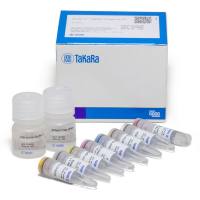Multiplexed Flow Cytometry: High-Throughput Screening of Single-Chain Antibodies
互联网
786
The development of high-throughput screening (HTS) technologies has become essential for initial characterization of recombinant antibodies and alternative affinity reagents, selected from large combinatorial libraries. Such binding ligands are routinely selected against a single antigen and screened for desired binding specificities. Recent progress with genome sequencing projects has led to widespread efforts to study corresponding proteomes; requiring selection of ligands against large numbers of gene products in a highly parallel manner. The capabilities of many routine HTS methods such as enzyme-linked immunosorbent assay (ELISA), or array-based methods, are limited to analysis of numerous different antibody clones against a single target or, individual antibody clones against many different targets.
We have developed a multiplexed flow cytometry screening method that allows analysis of individual binding ligands against numerous targets in the same analytical sample. The method produces a complex analytical profile for each antibody clone in the primary screen, by allowing simultaneous determination of relative expression levels, identification of non-specific binding, and discrimination of fine specificities. The quality and quantity of data, combined with significant reductions in analysis time and antigen consumption, provide notable advantages over other standard screening methods, such as ELISA. By combining HT screening capabilities with multiplex technology, we have redefined the parameters for the initial identification of affinity reagents recovered from combinatorial libraries and removed a significant bottleneck in the generation of affinity reagents on a proteomic scale.









